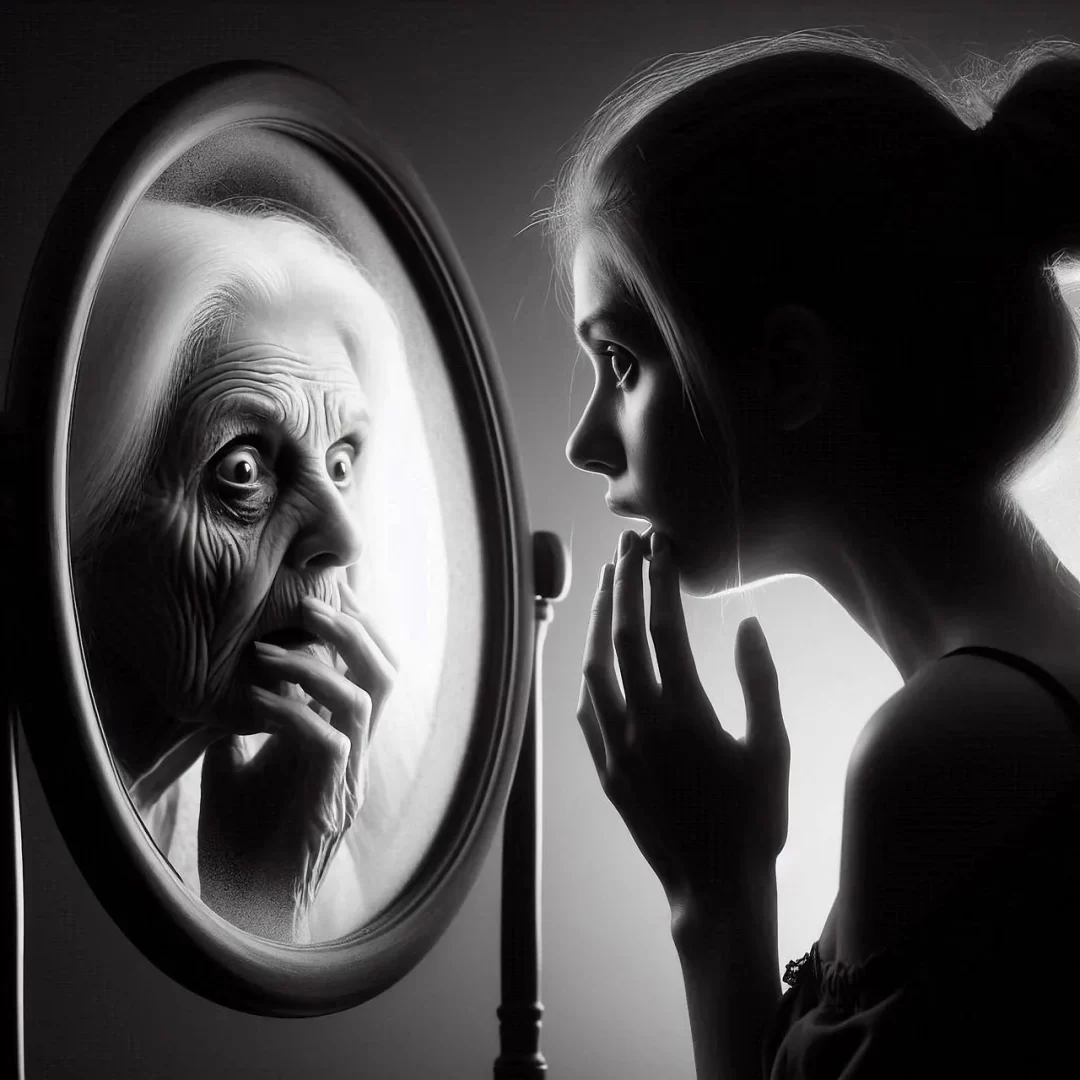We may earn money or products from the companies mentioned in this post.
As you get older, staying fit might seem hard, but it’s never too late to start a fitness journey. This article will give you strategies and advice to help you stay active after fifty. Forget old beliefs and see that age doesn’t limit your fitnessgoals.
Key Takeaways
- Debunk common myths about aging and fitness, and discover the benefits of exercise for older adults.
- Develop a positive mindset and embrace a growth mindset for your physical and mental well-being.
- Incorporate strength training to build muscle mass and improve bone density.
- Engage in cardiovascular exercise to boost heart health and manage weight.
- Prioritize flexibility and balance to prevent falls and maintain mobility.
- Fuel your body with a balanced, nutrient-rich diet to support your active lifestyle.
- Embrace the ageless nature of fitness and reclaim your vitality.
Debunking Myths About Aging and Fitness
Many think aging means you can’t exercise or learn new things. But, this isn’t true. Aging doesn’t mean you have to stop moving or learning. In fact, research shows older adults can still get fit and learn new skills.
Exploring the Benefits of Exercise for Older Adults
Exercise is great for older people. It boosts heart health, muscle strength, balance, flexibility, and brain function. This means exercise can really help with aging.
Studies prove it’s never too late to start exercising. You can still enjoy the benefits of being active.
- Enhanced cardiovascular health and reduced risk of heart disease
- Increased muscle strength and bone density, leading to improved mobility and reduced risk of falls
- Better balance, coordination, and flexibility, which can prevent injuries and promote independence
- Improved cognitive function, including memory, problem-solving, and decision-making skills
“It’s never too late to start exercising. The benefits of physical activity for older adults are well-documented and can have a transformative impact on their overall health and well-being.”
We can help older adults by debunking myths about aging and fitness. Encouraging them to be active can greatly improve their health. Start with small steps, build lasting habits, and celebrate your progress.
Developing a Positive Mindset for Fitness After Fifty
Starting your fitness journey after 50? A positive mindset is key. A growth mindset helps you succeed and feel good. It’s important to challenge negative thoughts about aging.
Embracing a Growth Mindset for Physical and Mental Well-being
Don’t think you can’t learn new things as you get older. A growth mindset means you see yourself as always learning and getting better.
Here are ways to think differently:
- See setbacks as chances to grow. Mistakes help you learn and move forward.
- Look at progress, not perfection. Celebrate your small wins and hard work.
- Be around people who support your fitness goals. Find groups that are positive and help each other grow.
- Try new things often to keep your mind and body active. Learning and getting better keeps you young.
With a positive mindset and growth mindset, you can do great things for your health and mind. You’ll reach your fitness goals no matter your age.
“The greatest weapon against stress is our ability to choose one thought over another.” – William James
Fitness After Fifty: Start Where You Are
Starting a fitness journey can feel overwhelming, especially if you’ve been sitting still for years. But the good news is, it’s never too late to begin. The important thing is to have a positive attitude and be ready to start where you are.
First, look at where you are now in terms of fitness. Don’t compare yourself to others or aim for goals that are too high. Focus on what you can do today, even if it seems small. This approach will help you build a strong base and slowly improve your strength and stamina.
Choose low-impact exercises that are gentle on your body, like walking, swimming, or easy yoga. Begin with short sessions, 10-15 minutes a day, and then slowly add more time and intensity as you get more comfortable.
The main thing for lasting fitness is to be consistent. Add your chosen activities to your daily life, whether it’s a morning stroll, an evening yoga practice, or a weekly strength training class. See fitness as a habit, not a task.
“The journey of a thousand miles begins with a single step.” – Lao Tzu
With time, effort, and a positive outlook, you can create a fitness routine that suits you and leads you to a healthier, more lively life. Remember, age doesn’t matter – it’s time to begin where you are and show what you’re capable of.
Incorporating Strength Training for Muscle Mass and Bone Density
Starting your fitness journey after 50? Adding strength training to your routine can change the game. This exercise helps you build and keep muscle mass. It also helps keep your bones strong. Regular resistance training fights the natural loss of muscle and bone strength as you age. This keeps you active and independent for longer.
Resistance Training for Seniors: Dos and Don’ts
When seniors do resistance training, they need to be careful. Here are some tips to follow:
- Do start with light weights and slowly increase the intensity as you get stronger.
- Do make sure to use the right form and technique to avoid injuries.
- Do include exercises that work all the main muscle groups.
- Don’t push too hard, especially if you’re new to strength training. Listen to your body and rest when needed.
- Don’t forget to add exercises for flexibility and balance to your resistance training plan.
Starting slow, being consistent, and celebrating your progress is key to successful strength training for seniors. With the right approach, you can regain your physical strength and enjoy the benefits of resistance training.
“Strength training is not just about building muscle; it’s about reclaiming your independence and enjoying a better quality of life as you age.”
Cardiovascular Exercise for Heart Health and Weight Management
Starting your fitness journey after fifty means adding cardio exercise is key. Activities like walking, swimming, and cycling are great for your heart and help with weight control. They make your heart stronger and help you lose weight, boosting your health overall.
Doing aerobic exercises regularly can cut down the risk of heart disease. This is the top cause of death for older people. These workouts make your heart rate go up and improve blood flow. They also lower blood pressure, cholesterol, and the chance of getting type 2 diabetes.
These activities can make you feel happier, help with depression, and improve sleep. To get the most out of cardio, start with low-impact exercises like brisk walking or water aerobics. As you get fitter, increase how hard and long you work out. Aim for 150 minutes of moderate cardio or 75 minutes of hard cardio each week for the best heart health and weight control.
“Regular cardiovascular exercise is one of the most effective ways to maintain a healthy heart and manage your weight as you age. Don’t let the fear of the unknown hold you back – embrace the journey and reap the rewards of a fitter, more vibrant you.”
For a good cardio routine, pick activities you like and keep a regular schedule. Adding cardio to your life improves your health, boosts your mood, and makes life better overall.
Prioritizing Flexibility and Balance to Prevent Falls
As we get older, keeping flexibility and balance is key to staying independent and avoiding falls. Luckily, there are easy exercises that help us stay agile and steady. These exercises are great for keeping us moving well into our older years.
Yoga and Tai Chi: Gentle Exercises for Improved Mobility
Yoga and Tai Chi are great for boosting flexibility, balance, and overall health. They are low-impact and focus on the mind and body.
These exercises help older adults move better, stay stable, and be more aware of their bodies. This is very important for fall prevention.
“Yoga and Tai Chi are fantastic for improving flexibility and balance in older adults. The slow, controlled movements and focus on proper form and alignment can make a significant difference in reducing the risk of falls.”
Adding just a few sessions of these exercises each week can really change how you move and feel. By focusing on flexibility and balance, you can keep doing things on your own and live better as you age.
- Yoga and Tai Chi improve range of motion and stability
- These gentle exercises help prevent falls and promote independence
- Consistent practice can make a significant difference in your mobility
Nutrition for Active Aging: Fueling Your Body Right
Starting your fitness journey after fifty means paying attention to what you eat. Eating the right foods helps support your active life, keep your muscles strong, and boost your health. A balanced diet is key to getting your body ready for the physical activities you’ll do.
Key nutrients for active aging include:
- Protein to build and repair muscle tissue
- Calcium and vitamin D to strengthen bones
- Antioxidants to combat inflammation and support immune function
- Healthy fats to provide energy and support brain health
As you age, you might need to eat smaller meals. But, make sure to eat a variety of foods that are full of nutrients. Lean proteins, whole grains, fruits, and veggies should be your main foods. If you need supplements, talk to your doctor first.
“Good nutrition is the foundation of an active, healthy lifestyle. By fueling your body with the right nutrients, you can unlock your full potential and thrive in your golden years.”
Drinking enough water is also important for active aging. Drink water all day to help your body work right and recover from exercise.
Nutrition and fitness work together. Eating well gives you the energy and strength to live an active, happy life as you get older.
Conclusion: Fitness is Ageless
Fitness isn’t just for the young. You can keep up with it at any age. By following the tips and ideas shared here, you can stay fit and healthy. No matter how old you are, you can improve your health by staying active.
Think of fitness as a journey, not a goal. With a positive attitude, achievable goals, and regular exercise, you can enjoy the perks of staying active as you age. You can do strength training, cardio, flexibility exercises, and eat right to live a healthier life.
Remember, fitness has no age limit. You can start an active, fulfilling life today. Adopt a positive outlook and start a journey that changes how you see aging. Your future is bright, so take this chance to be the healthiest, strongest you.
- We utilize AI content in some of our blogs






No Comments